Russian troops are expected to get the first pilot batch of next-generation T-14 Armata tanks in late 2019 – early 2020, according to the head of Rostec State Corporation Sergei Chemezov.
The Armata was designed over the course of five years, and features a number of characteristics new to Russian armoured vehicles, including an unmanned turret. The crew of three is seated in an armoured capsule in the front of the hull, which will also include a toilet for the crew.
Reported by TASS at the 2019 Dubai Airshow, Chemezov said:
“Currently, work is nearing completion to prepare the production facilities and an experimental batch has been manufactured. It will be delivered to the Russian Army in late 2019 – early 2020.”
Armata’s main combat characteristics centre on a high degree of passive and active armour protection.
The Armata has been described as a major concern for Western armies, and British intelligence views the unmanned turret as providing many advantages. Western observers, however, question Russia’s ability to purchase modern tanks like the T-90 and T-14 in significant numbers.



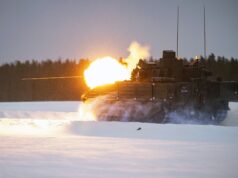
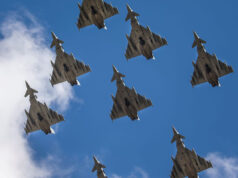
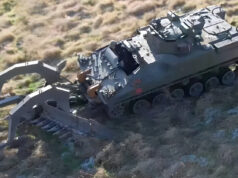
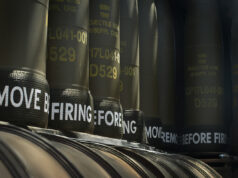
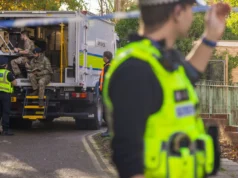
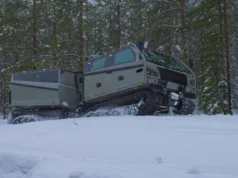

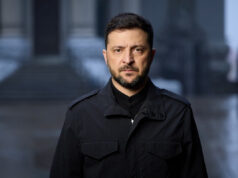

Is this tank any good? Some say it’s the best on earth some say it’s junk! So many different opinions! And aren’t they only building theses in small numbers like uk size numbers.
I’m not sure how good it’s optics, electronic architecture, active and passive protection relative to the latest Abram and Leopard. It all appears to have been built in rather than bolted on to the side so in theory should be better. The armoured capsule an unmanned turret is definitely a huge improvement making the tank better protected while significantly lighter than its Western rivals. In reality how well it can defeat ATGM will be the most important factor.
Many many questions need answering about this latest offering from the Russians, in their promo videos and press releases they say it’s the best but the biggest issue for them is how many could they afford? They have a large tank force but it’s mainly made up of T64’s, T72’s which are the majority, a few T80’s and even less T90’s. easy pickings for our modern and decent MBT’s..
It’ll be interesting to see how things develop….
Can’t judge how good a tank or any other piece of military equipment is until it’s been in real combat. Remember when everyone was saying the Leopard was the best tank in the world even though it never saw action. Well after it’s first combat experience it’s no longer thought of so highly.
Is that the leopard 2 that ISIS fighters in Syria took out an entire Turkish army squadron of using handheld anti tank missiles, and hand made bombs in 2016? Yes the leopard 2 looks good, reality is different. If operated by an overconfident, poorly trained crew (as per Turkish Army) then losses are inevitable
CAM my view is its junk. Can you see Russian material science building a tank that can out compete and beat an upgraded challenger 2. I cant! The only advantage of the design is crew survivability.
Russia has a space program and produced hyper sonic missiles, this suggests their material science has improved.
I guess we’ll just have to wait and see…..it won’t be long before one of them gets destroyed by Chechens…
I still have my doubts over the combat viability of this tank. My friend, Matsimus did a very good review of the tank on his Youtube blog, he’s an ex tanker, so I value his opinion. To my mind having the crew low down in the hull, in a massive armoured box is awesome for crew survival, but crap for situational awareness. This is especially true, as snipers are trained to target the optics on tanks. So once the electro-optics on the turret are disabled does that mean the tank is no longer combat effective? In a conventionally manned turret you have optical backups, like on the Chally2 which is covered by an armoured door. Not sure how that is achieved on the Armata?
Until, the tank is used in combat, I think the jury’s out on this one.
Hi DaveyB,
The situational awareness thing is often discussed in terms of the younger generation being able to build and hold a mental image of a situation based on a limited screen view – the ninyendo generation arguement. I’m not sure how robust that arguement is but if we accept it for a moment then the electoroptics might give a good picture. I am also reminded of the periscopes on UK subs – cameras – and I gather the submariners like the capability. But I guess there are not many snipers in the middle of the ocean.
For me the biggest issue is that it reportedly only took 5 years to develop, so I guess they repackaged existing tech. If so I would be very surprised if it was a well developed, thought through and cutting edge piece of kit.
Yes that 5 years bit caught my eye too, if so it is not a fundamentally new tank design clearly, though it may conceivably be a figure plucked out of the air or simply in error I guess. I have to say in look it is very un-Russian but equally reminds me of a few 60s70s prototype western designs that never quite came to fruition or were fully finalised as a design, not that that tells us much about its true capabilities.
On a boat the advantage of the camera ‘periscope’ is that you can pop it up for a quick ‘all round look’ then drop it and review the footage. I’m guessing on a tank it will be sat there all the time. I’ve no idea if the boys in these tanks have a screen to view stuff and rewind etc, I’d imagine that would be pretty useful.
Andy short vid shows the inside
https://www.youtube.com/watch?v=Yz0bLY7hXxI
Cheers mate.
That’s just proven it to me really. Optics look poor quality and the display screens dont seem to have great resolution. Also those 3 guys scrambled over each other to access a single hatch to get in or out. If that tank is hit. It will be a death trap for its crew
Thanks farouk interesting video.
Mr Bell, yeh the screens did not look that good and they were pretty small as well. Although it was a very limited view we were given, not surprisingly.
Situational awareness could be an issue, I guess, even without a sniper. Nevertheless, they have clearly tried something different and I would have thought it could be improved over time – assuming the Russian state can scrape the money together.
Seems they have managed to obtain French Thales night vision optics, somehow they have got round export restrictions.
bro you couldnt even see the optics inthe video posted. the screens look alright nothing incredible. but criticizing the optics that you have not seen before is freaking goofy.
@daveyB given the way the Russians use arty to saturate a place good luck finding a sniper in one piece.
Janes Defence had a article on the armata which quoted a Russian defence minster saying that they can only afford 100 built ,mind you we used to have 400 chally2 that number has been criminally reduced now.
Its impossible to compare numbers directly, as tanks can’t fight in isolation and the assets that fight alongside them mean just as much to their capability as their armor/weapon.
The challenge is that Russia like the US has a huge stockpile in older tanks that it could activate, which would give them extra strength is depth and over the 100, plus allow diversion tactics to be used.
Yes exactly Steve ,the Russians are in the process of refitting the T80 tanks to my surprise and sending them to the Artic parts of Russia which is worrying , and of course they are constantly upgrading the T72 tanks in which they have more of then any other type.
You are correct Dave, there are a couple of hundred being upgraded for the current Arctic brigades and the 1 or 2 new brigades being formed, something to do with the gas turbine engines being better in the extreme cold, I’m not a mechanic so can’t give technical reasons sorry
Yep the reason I’m surprised Russia is reintroducing the T80 into service is that they had bad losses in the chechen war and had a habit of catching fire easily due to its engine design ,they were due to be withdrawn from service.
Seems the plan is to only upgrade about 70 CR2’s, the remainder perhaps being used for spares. Heavy tanks seem to be out of fashion and are costly to maintain, also expensive to produce low production numbers of spares with lean management principles for a small tank fleet!
Funny enough, I was reading about the Armata on one of my new books:
Modern Tanks (Technical Guides) Hardcover – Illustrated, 14 Apr 2019
by Dr Stephen Hart (Author), Professor Russell Hart (Author)
According to the authors in 2014, Russia made it known that it was going to contract UVZ to to produce 2300. However due to the high cost of the T14 and the cheaper cost of upgrading existing T72s, T80s and T90s that was downgraded in 2016 to 100 experimental vehicles by 2020 . That was downgraded again in 2018 to 32 T14s for delivery by 2021. As of late 2018 just 17 vehicles are in Russian service
With the British Army abandoning the MBT this new tank is surely going to be a worry in the future? If the Challenger2 LEP does happen, so few will enter service, that either the Americans or the Germans will have to do the lions share of MBT tactics? Currently, the German tank strength is not impressive, but they do plan to expand their tank fleet and have an all-new vehicle in early development, in collaboration with other states. Though the British army is getting Boxer and Ajax, plus multiple variants, the heavy punch of enough CH2’s will be sadly missing.
I can’t help that by trying to cover all roles we don’t cover any effectively. It might be better to abandon heavy army and leave that to the continental allies and focus the funds on more mobile assets like the Apache or up gunned boxer
I think what we have we use effectively. It is important to have a balanced force based against a range of threats. Telling our NATO allies that we would leave the hard fight to them whilst we downgrade our own ability to fight would not go down well. That said, many smaller nations have done just what you have said.
It’s not about leaving the hard fights to them, it’s about optimising what we bring to a fight. We don’t have enough tanks /heavy gear anymore and keep piling in money into an ineffectively small force is not efficient, as it saps funds that could be used elsewhere. If we are going down the strike route we should focus on it. Which means giving it the capability to take out tanks using missiles and reinforcing it’s anti air capability etc, so it can rapidly plug gaps as needed by NATO with their more slow moving MBT formations. As a double benefit it would mean we are more focused on being able to fight more realistic wars such as counter insurgency etc, considering a set battle involving large amounts of tanks isn’t really that likely. In effect we end up bringing more to NATO because we are a specialist and optimised capability.
This constant attempt to justify reducing the numbers of CH2, is a worthless waste of time. If all potential adversaries had the same policy, then the current UK status would make sense, but they aren’t, in fact, they plan to build them in their hundreds and possibly thousands! Nothing has changed in battlefield tactics since the 1967 Isreal War and it was primarily flat land terrain. The UK is more likely to be deploying MBT’s in the desert again, just as it did in recent conflicts. Without adequate heavy tanks, our frontline punch is much reduced.
I’m coming around to the view of one Nicholas Drummond in that like most other defence projects, MBT’s will become a multinational development effort and that perhaps we should be partnering withe the Americans or Germans for the next gen. MBT. Upgrading the CH2 is looking to be very expensive and if rumours are true may even not have a large enough power plant.
I think if we can secure a decent % of R&D and build then we should go for it.
The all-new and possibly unmanned M1 replacement is about to begin development. From the standpoint of investing in a new tank, the UK could could do a lot worse than join this programme? Of cause, this would be dependant on the US allowing our participation however, there must still be enough BAE skills around to contribute considerably? I prefer the idea of the UK choosing the new M1 over a European design, as there could be a bigger economic benefit in the sheer numbers involved?
I agree with going in with the Americans as opposed to the Europeans we could call it Firefly then too.
British industry could then specialise in add ons like armour (Chobham) optics etc. Surely more cost effective than upgrading the current batch
Good to know JME89 that there is someone who sees the new M1 as a better programme for the UK exchequer. If we went into a European venture (that’s if we would be invited) the pickings would be less financially rewarding.
Cat have got a common rail system for the cv12 which raises power to 1500hp plus , lowers smoke and noise. However gearbox and final drives may need upgrading. Would not call a power plant weighing 5 1/2 tons small lol!
I do think we need to have a hard review of national security strategy, from the ground up. I know that is supposed to be what the SDSRs do, but not sure how well they’ve worked out for us recently. I know that 2015 confirmed two carriers and all that stuff, which was great. But it’s a bit like they didn’t really bother to read the army bits (in particular), or were too scared of questioning the generals.
There have been a huge number of articles criticising Strike in its current form; Warrior upgrades seem to be late, over budget and arguably is wasted on an out of date platform; Ajax is both late and overbudget, but at least it’s a modern design; Boxer looks like it could be good, except the best armed variant they appear to be ordering is a 40 mm GMG. There is very little to be said for long range fires, and no-one is quite sure how much value the C2 LEP will bring, given our small numbers of them. The only sensible-sounding procurement recently would seem to be those mobile SHORAD systems with the Giraffe radars and Land Ceptor.
We’re shifting the marines to maritime raiding, but also want to retain a heavier amphibious capability, and our more “global” posture means we want to bring effective force to bear anywhere in the world, while also bearing in mind we want to be able to check any Russian aggression in eastern Europe (because it will change the balance of power away from our traditional power and economic block of allies in the west, where we’ve spent most of our political and financial capital, not because of the EU). To me, this means we have to make some hard choices when it comes to what we keep and what we don’t. I don’t know all the answers and numbers, Daniele’s the man for that. But I’d make Strike all wheeled, Boxer, with some versions packing ATGMs, 120 mm smoothbores (if they’ll fit, or at least the next biggest thing) and 120 mm mortars for integrated direct and indirect fires. I’d drop warrior and go with Ajax and some APC derivative of it to replace warrior in any tracked units we keep. Sell off any warriors that are saleable. Reducing the number of different platforms simplifies and reduces the cost of logistics and training. Everything should be deployable via the amphibious vessels we have, able to make it to eastern Europe quickly, operate over a wide front with minimal logistical support, and in sufficient numbers to be effective. To be honest, cutting tracked armour completely, but having the Boxers with ATGMs and 120s should probably be seriously considered; I don’t like the idea much, but it’s a case of priorities and cost, and I think that heavily armed wheeled armour ticks more boxes. They should be able to handle T-14s too, although I acknowledge they’re not as tough as a C2 by a long way.
But the army isn’t something I know a lot about, so I look forward to being schooled by those on here with more knowledge!
The last thing the MOD needs right now is another defence review. The current objectives may need tuning, especially our MBT force, and a more workable distribution of Type 26 & 31 work around the UK, as the current plans are flawed. A grass route review simply holds up programmes and invariably results in meaningless cuts.
Sorry, I didn’t mean to imply that we need an SDSR; my comment about them was primarily to say that they haven’t done the MOD a whole lot of good in recent memory. The MOD certainly cannot cope with another cut. My concerns are primarily with the army’s current published plans, but it can’t be looked at just in isolation, or our service branches won’t be able to support each other. Hence my comment about the MOD as a whole.
There seems to be a lot of legitimate criticism of the army’s current plans for their force structure going forward; specifically Strike. We seem to be speccing Strike for operations in an environment like Syria, but saying we’re going to use it against large armoured and mechanised infantry formations in eastern Europe in the event of Russian aggression there (every article I’ve read on the idea is saying they’ll be ripped to pieces). We’re upgrading Warrior (which most articles I’ve seen say are knackered) at high cost (particularly considering the mess with the turret), instead of buying an Ajax-derived replacement to keep logistical and training commonality. We’re doing a part-upgrade (maybe) on C2, because we can’t afford anything else, yet not sure how or where we’re going to use them because Russia will have finished mopping up eastern Europe before the C2s arrive. We’re not doing a whole lot about fire support at all, even though there are multiple options available, and our AS90s won’t be seeing any upgrades at all, even though everyone and their dog is looking at how to get as much organic fires into their battle groups as possible.
The SDSRs we have had are foreseeing a global, expeditionary force, capable of maintaining/enforcing the global rule of law anywhere in the world (including eastern Europe). That makes sense, particularly after Brexit. But the army doesn’t seem to have got that memo. I’m not knocking the soldiers themselves, and I think we’re among the best in the world.
With respect, I think you might be underestimating the criticisms of the army’s planned force structure and how it fits in with the UK’s stated aims for its armed forces going forward. I don’t think an SDSR is required, the overarching objectives seem quite sound, but I think that the army needs to drastically review their priorities in light of the SDSR, in conversation with the RN and RAF.
Wow, that was a comprehensive reply joe16, and right on so many points. There are many concerns with a whole host of MOD projects including Warrior upgrades and CH2LEP. Matters won’t be helped by the current political climate, with all parties determined to considerably increase public spending. I fear that could mean a significant clampdown on military budgets. Some parties promise huge increases in social programmes, which do not include defence, apart from welfare issues. The net result will be caution on behalf of the MOD with its dealings with the treasury, particularly if one leading party wins power!
You’re quite right there- all parties are making spending promises with one aim only: election. Unfortunately, I don’t hold out a lot of hope that any party will really look after the MOD that well (although I fully agree with you that some are worse than others); the issue would seem to be that there are few MPs with a genuine appreciation of the improtance of the armed services, and most of their primary concerns are either the finance sector or social welfare.
For the record, I have no problem with either. But we have lower corporate taxes than the US! The poster child of neo-liberal capitalism has higher taxes on corporations than we do, and we’re talking about cutting them more. On the other side of the coin, we seem to be finding new ways of spending on social welfare, and then do it badly, and then sell services off to private firms who don’t do it well either.
Frankly, I think the MOD could also do with a brush up on how to spend the money they are given well. But I agree: they could well face further cuts, whether due to tax breaks for people who don’t need more tax breaks, or for additional social welfare. This will push them to go into penny pinching survival mode if we’re not careful, and we’ll lose further capabilities.
There is one big change on the horizon in the form of Brexit and I believe this will result in an increase in defence spending. For the most part, the RN will probably get the lion’s share as it will need to expand its operations envelope? A number of overseas bases have been created to allow RN vessels safe ports of call, and more will possibly be needed? An increase in frigate numbers beyond what is currently planned, will be necessary, to enable more vessels to be stationed permanently abroad.
Yeah, that’d be a nice outcome!
The RN makes sense for a bigger share, although we should bear in mind (as with the report about the army this week) that personnel numbers probably should be addressed before hardware; we have a T45 and a T23 tied up alongside semi-permanently at the moment, purely because there’s no crew for them. That’s 18% of our air defence destroyers and 8% of our frigate force (not sure if a GP or ASW is set for reduced readiness next, as there are quite a few in refit according to Think Defence). Just having crew for them would improve our availability quite a bit, although I agree with you that one or two more would be nice.
I like the overseas basing that we have, and the idea of forward deploying assets seems to be a good one. Falklands, Gib, Bahrain and Singapore seems to be a good spread, maybe some kind of arrangement with the Australians might be a good idea as well. That’d give us the South west Pacific; I don’t think we need to worry too much about the west coast of the Americas, but Chile might be another option- particularly if we can convince them to buy some more old T23s, or some new T31s.
Aside from that, it’d be nice to see a bit more airlift for the RAF (fixed and rotary wing) and you already know what I think the army needs! Most of any increase in military funding should primarily go towards overhauling/improving personnel recruitment, conditions, retention, training etc.
Great post Joe.
Agree with all of that.
Thanks, didn’t want to come across as anti-army; I’m not. But all the reports I see, and the analysis of them, seems to be implying that they’re out of synch with the rest of the military on what the UK is trying to achieve strategically. I know there were a lot of accusations of the same directed at the RN not so long ago, and most of them seem to have been put to bed now (although the submarine contracts are still a bit of a blot on that, as far as I’m aware). So maybe we’ll see the sense of the army’s plans at some point in the future. But I’m not sure that will be the case…
Totally agree Joe. Nothing to add to your arguments
Thanks, glad I’m not coming across as a mad ranter… Or at least, if I am, that I’m in good company here!
Interesting argument and I can see why you have said what you did, but if I may. There are 8 x 8 AFVs out there that have 120mm guns but they should not be used to fight MBTs. The new Strike Bdes could probably do with some 120/105mm firepower but Ajax would be a better platform for it. Wheeled vehicles can manage 30 to 40ish tonnes of armour at best. Heavily armoured they cannot be.
I see a lot of comments about how important it is to get where your going without really thinking of the consequences of fighting with a particular type of vehicle when you get there. Boxer is a great vehicle to get infantry to the fight and it can support the fight. Giving it a tank killing capability is dangerous though. To think the something the size of Boxer with added 120mm gun and a light turret could go up against purpose built Russian MBT like the subject of this article… well it can but why risk it. They would be torn apart. It would be a bit like fitting a turret to an Aircraft carrier and parking off an enemy coast to conduct NGFS. That comment was added rather crudely for you navy types, I hope you get the meaning though.
MBT’s are not just there for tank killing. Supporting infantry with all weapon systems is as important. It can be used in many environments and 24hrs a day. A modern Armoured Battlegroup can cover many miles in a day whilst in the fight and up to 250+ miles a day outside the fight.
Our upgraded AFVs will be world class. Small in number, yes, currently three Armoured Infantry Brigades, but highly capable. With our highly trained AFV crews that are regularly exposed to some of the most challenging training delivered by any army, we can be confident that they can hold their own on the modern battlefield. They also have a place in peace enforcement, think IFOR in Bosnia.
I’d sum up by saying let’s use the right tools for the job. A nation of our size and still considerable power should still be able to bring every tool it needs to fight that fight correctly.
Thanks for your thoughts, always appreciate a different perspective.
I take your point, I’d really not see a 120/105 mm Boxer as a toe to toe Armata-killer. Having said that, I believe that the vast majority of potential Russian armour they’ll be facing are upgraded T-72s and T-80s, which might be a different equation if you’re taking into account the ATGM and 120 mm mortar Boxers as well as the direct fire 120s? I don’t know their capabilities to be honest.
My understanding of the current model for strike is that they’re intended to be our quick reaction forward deployed force, but they’re mixed tracks and wheels (so deployability is an issue), they’re supposed to go in without MBTs, and they have no big guns or organic fire support whatsoever. My suggestion was a way to make sure they’d have a chance of surviving in conventional combat in eastern Europe, but also be useful in the expeditionary environment. If mixed tracks and wheels is less of an issue than suggested then I’d agree with you that Ajax would be the better platform for the 120/105 mm, although I think that Boxer with 120 mm mortars would still have a place.
I’m not necessarily advocating the removal of MBTs, our tankers are great, but our tanks need a serious upgrade to maintain the edge or there’s no point in having them for their cost. My understanding is that tracks should stick with tracks and wheels with wheels, so that was the main change I was trying to make, while cutting what I saw as waste in the shape of the Warrior upgrades. Upgraded C2s supported by Ajax and an Ajax-derivative APC for the tracked portion of our force, with Boxer and upgunned Boxer for the faster, wheeled Strike brigades. Again, as I said, if the whole tracks/wheels isn’t an issue, then Boxer + Ajax Strike is all good.
I think the biggest enemy of the MOD at the moment though is money and I don’t think it’s solely that they need more, they need to be better with what they have. The Navy seems to be getting on top of this now, but the army doesn’t seem to have done so yet- thinking of the whole Warrior upgrade programme as an example of this.
It is certainly an interesting tank. It has a very good main gun, it’s well armoured and protected. Situational awareness would be shocking but integrated into regular T90/80/72 tank companys it could provide great overwatch, firesupport, sniping and defensive tasks. Say three T14 per company and 100 T14 could support 33 tank companys. We did a similar thing to that with Conqueror.
As a mariner, I am somewhat under qualified to comment on the efficacy of various tank designs.
So I ask the question to those with more understanding here :
What is the difference between an anti tank round going through an unmanned turret and an anti tank round going through a manned turret?….
Crew survivability
Didn’t mean to post that so soon… Edit button?
The crew tend to be better protected when they are separated from the turret into the main body of the tank – and I believe this allows for more comprehensive armour on the turret (as it isn’t hollowed out for crew access).
I suppose it depends on what the turret contains.
If we look at what Jordan did with their Challenger 1s Falcon turret modification. You can significantly reduce not only the weight of the tank,but also the amount of armour required to protect the gun’s breech and autoloader. The Falcon turret stores ready 11 rounds in two revolver carousels behind the gun’s breech. They also replaced the gun with a smoothbore so they could use one piece ammo. There was an additional 17 rounds stored in the hull, but these required manually loading into the carousels when empty. Therefore, there is less chance of an anti-tank round detonating the tank’s ammunition and damaging the tank if it strike the autoloader magazine, due to its blow off panels that direct an explosion upwards. The gunner and commander sit inside the turret ring again below the hull line. So unlike the Armata, when the turret rotates so do they. I guess if a AT round penetrates the hull and hits the stored hull ammo its end-ex for the tank.
The Armata stores its main gun ammo in a slightly different way. The two piece ammo is stored in the turret, but on a carousel on the turret floor below the turret ring. The autoloader grabs the rounds from the carousel and then feeds them into the breech. Therefore, no ammo except the ready round is stored above the turret ring. So if an AT round penetrates the turret there’s less chance of an ammunition detonation. Conversely if an AT round goes through the hull and into the carousel there’s more chance of detonation. This should wreck the turret etc, but the crew should be safely protected in their armoured box. I suppose it depends if the explosive force is allowed to go upwards, if it’s contained who knows.
Looking at the Abrams, the majority of the main gun rounds are stored in the magazine located in the rear of the turret bustle. The crew in the turret are provided with protection from an AT round hitting the magazine by upper turret blow-off panels, but also an armoured bulkhead that separates the magazine form the crew. The loader has a sliding door to access the main gun rounds. The Abrams can also store additional rounds to the side of the driver in the hull, which makes the tank vulnerable to an AT round. However if an AT round penetrates the turret where the crew are, its pretty much game over for them.
It is a good question. A better question would be. What would the effect be on the Aramatas optics, autoloader, situational awareness if the turret, with no crew in it, was hit by a 120mm tungsten round from 3 miles or more away at high velocity. I would think the Aramata turret would be penetrated easily and its optics, relays, autoloader destroyed. Admittedly crew may survive as long as flash does not travel down into crew compartment and they can escape over each other from their single hatch.
In short I think the Russians will continue to extol their wonder tank until it is found wanting on the battlefield. Its first combat debut will certainly be interesting. Cant be long until we see it as Putin likes his little bushfire wars.
Thanks Mr Bell – that was kind of what I had imagined
All the pictures/videos of the Armata quite clearly show there are two access points to the crews compartment. If looking at the tank’s front, the right position is the drivers, the middle the gunners and the commander on the left. The driver and commander have their own access hatches, leaving the gunner to crawl over the commander’s or driver’s seats. There could be a problem if the turret is knocked out and the main gun stops over one of the hatches. Then the crew’s only option is escape via the remaining hatch.
Its interesting to read the reports on the performance of armoured vehicles operating in the Ukrainian border war. Basically anywhere within 10km of the “front line” personnel must be taken to the front in armoured vehicles. This is because the “separatist” forces have been using a significant number of drones for reconnaissance and target acquisition. Using a mix of military, but also cheap commercial (toy) ones bought in bulk of Ebay etc.
Their basic 8×8 vehicle is based on the the BTR series either 70s or 80s. The 70 was found to be a death trap due to its small side doors, not allowing crew to escape quickly enough when hit. The 80 in the basic form was found to be easily penetrated by armour piercing bullets. Their own design BTR 3 and 4 are new designs and have fared better. However, they prefer the BTR 4 as it has a rear ramp, not the small side doors like the earlier BTRs. They have significantly up-armoured and up-armed the vehicles. Adding applique ceramic and ERA, the majority of them now have a 30mm auto-cannon armed turret. In some respects its more flexible than Boxer, as its also amphibious. They also view that the vehicle must have its own compliment of anti-tank guided missiles. Not only for the “ex-Russian” T72s they come across, but also to take out enemy drones. The BTR 4s in particular have proven themselves in conflict surviving multiple RPG hits.
Personally, I do like the Boxer/Strike Brigade concept, but not at the expense of the heavy brigades. Agreed that the Strike Brigade should be used as the rapid reaction force or as the flanking/exploiting force. But without the proper vehicles it cannot be expected to go toe to toe with a Russian style armoured force. We should put in place the lessons learned by Ukraine fighting in a modern conflict against a peer enemy. They have removed their “infantry taxis” and replaced them with either infantry fight vehicles or infantry support vehicles such as the BTR3/4. All these vehicles have now been given the capability to not only support dismounted infantry, but also provide more support and flexibility.
“Western observers, however, question Russia’s ability to purchase modern tanks like the T-90 and T-14 in significant numbers.”
The Russian Army has been reorganized and downsized to a small force based on volunteer “contract” NCO’s. It could be fully equipped without “significant numbers” by past Russian standards. A few brigades each with a few of the small Russian battalions would be a vast shift of Russian Army capabilities.
It can be disabled by a large 120mm scatter gun taking out the optics against which it has no defence.
SItuational awareness is vital when operating in a hostile environment, CCTV periscope etc all have a part to play but there is no substitute for the Mk1 eyeball and head up in the turret, in war locating the enemy and making the correct tactical assessment will win the day, the crew might well survive but probably prisoners In a wrecked tank. The use of Uav coupled with MLRS or top down attack ATGM will destroy any tank.